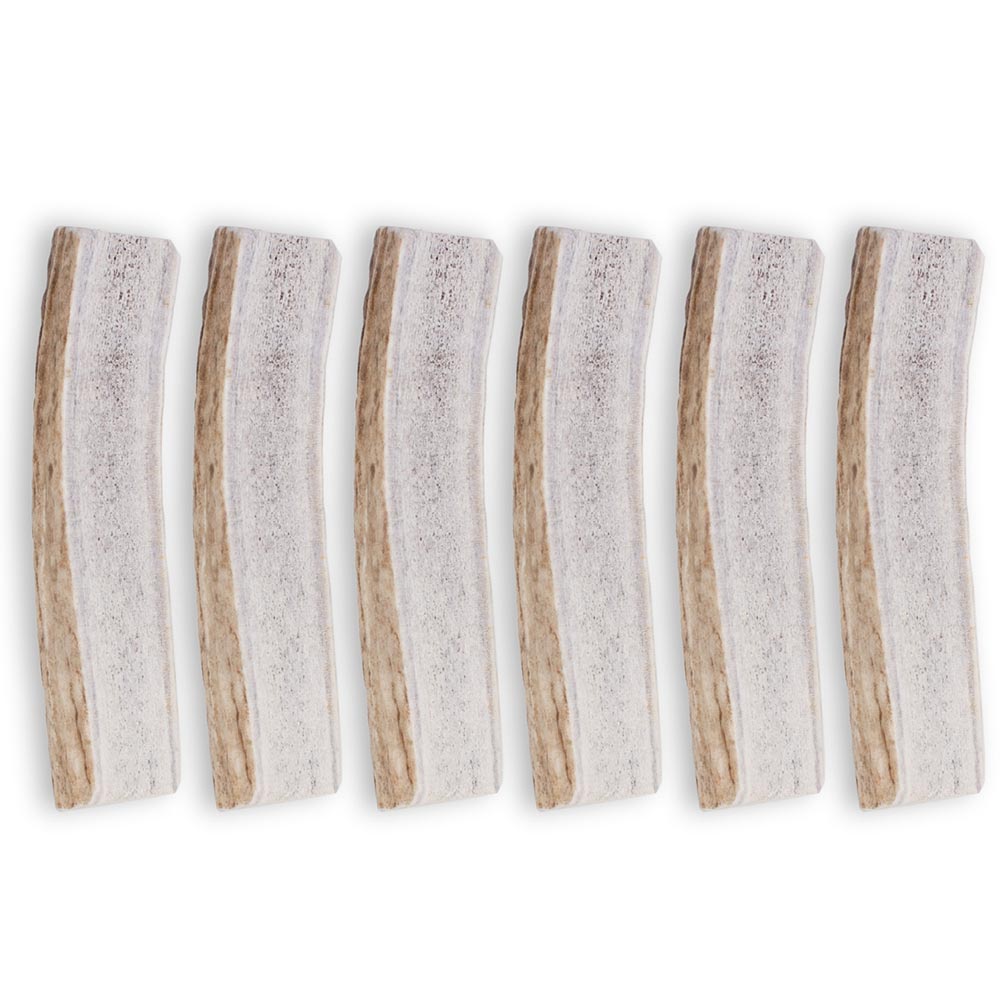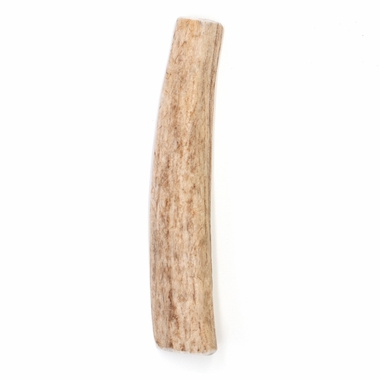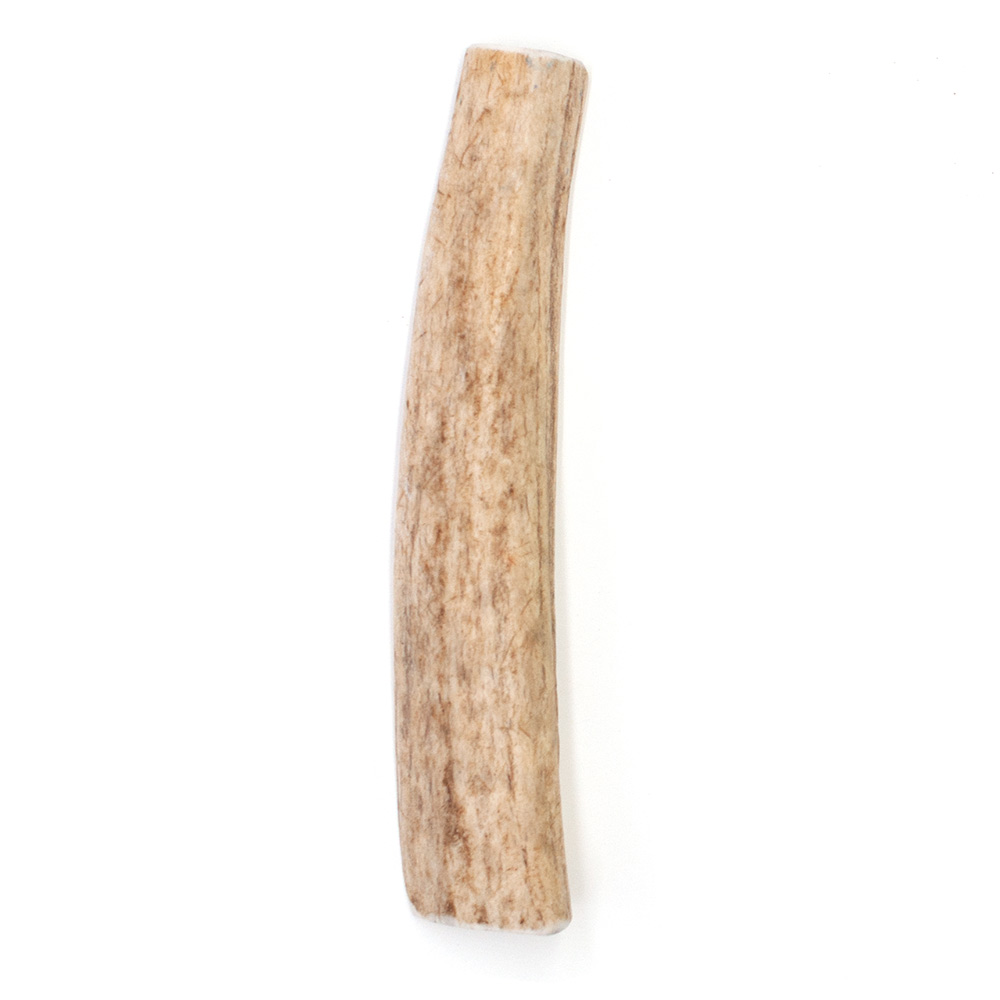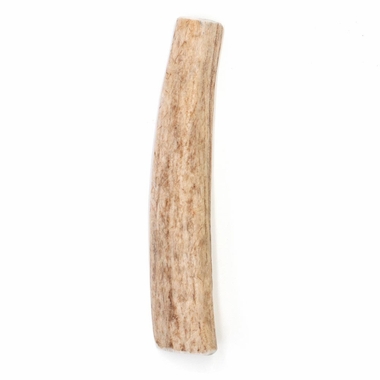6-PACK Spizzles Elk Antler Dog Chew - Split (Small) 4"
Description
Spizzles Elk Antler Dog Chews are naturally shed, incredibly nutritious chews that provide a safe and long-lasting chew experience that your pooch won't soon forget!

These appetizing antlers are the ideal alternative to difficult-to-digest rawhide treats and potentially perilous animal bones.
Each antler is packed with protein, calcium, and phosphorus to keep your pet's bones, blood, nerves, and muscles healthy. Spizzles Elk Antler Dog Chews are available in two styles to offer two unique chewing experiences that are perfect for any dog.
"Split" antlers are center-cut to create a softer chew for times your dog is seeking a more malleable treat. For more fervid chew sessions, "Solid" antlers offer a tough texture that is sure to stand the test of time. Both types of chews are available in a variety of sizes to accommodate any dog. Order this unbeatable chew treat for your dear dog today!
Key Features:- Rich in calcium, protein, and other nutrients your dog needs to stay healthy
- 2.4 times as tough as regular "wet bones"
- Grade A antlers found naturally shed in the United States and Canada
Ingredients
Observation recommended when giving treats to your dog.
| Guaranteed Analysis: | |
|---|---|
| Crude Protein (min.) | 40% | Crude Fat (min.) | 0.1% | Crude Fiber (max.) | 0.1% | Moisture (max.) | 11.4% |
| Antler Composition: | |
|---|---|
| Protein | 40% | Calcium | 22% | Phosphorus | 11% |
Other Trace Elements: Magnesium, Zinc, Iron, Potassium, Sulfur
Useful Information
With the exception of reindeer and caribou, antlers are found solely on males. Antlers are made of bone and sprout from the pedicle, a point just above their skulls. They are thought to help with foraging, combat, and courtship displays.

Testosterone in bucks initiates antler growth. While growing, a fuzzy skin called velvet covers the antlers, which is sensitive to the touch and rich in blood vessels. This velvet helps supply the antlers with essential nutrients for rapid growth.
Finding antlers in the wild is rare. Antlers, once shed, don't last very long—because they are so full of nutrients, they are quickly eaten by rodents or other animals. Our Spizzles antlers are all Grade A (#1) antlers, meaning that they have been collected in the past year as fresh drop. This ensures that they maintain their brown color and consistency compared to Grades B (#2), C (#3), and Chalky.
Used in MedicineChinese medicine has been using powdered deer antlers for at least 2,000 years with the belief that they:
- Nourish the Yin
- Tonify the kidney
- Invigorate the spleen
- Strengthen bone and muscle
- Promote blood flow
Western medicine is looking into medicinal benefits as well and has found:
- Potential to aid in tissue regeneration through topical use
- High nutrition values
- Deer velvet contains Insulin-like Growth Factor-1 (IGF-1)
Antlers are not horns!
| ANTLERS | HORNS |
|---|---|
| Composed of bone and velvet | A bony core structure and covered in a thin layer of keratin |
| Usually branching patterns | More linear (some are coiled) |
| Fast-growing (2-3 cm per day!) | Horns grow slowly, forming growth rings |
| Shed and re-grown each year | Never shed at any stage of life |
| Typically found only on males | Both sexes of bovids possess horns |
| On Cervids | On Bovids |













